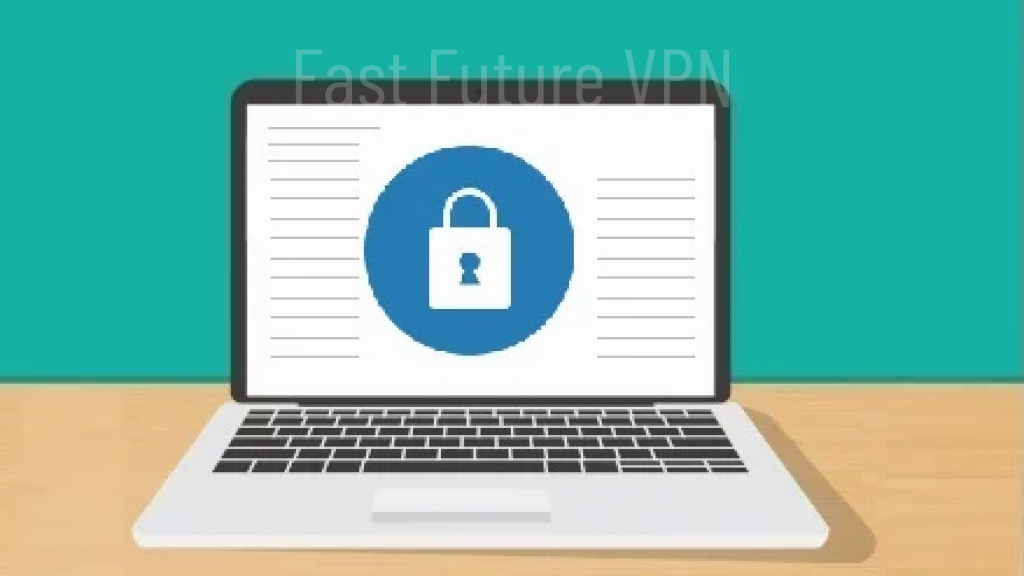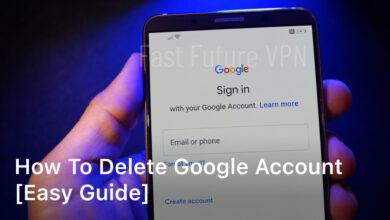
Welcome to our comprehensive guide on how to check if a website is safe, where we will provide you with essential tips and techniques to ensure your online safety. In today’s digital age, where cyber threats are constantly evolving, it is crucial to prioritize website safety and take necessary precautions while browsing the internet. By following the strategies outlined in this article, you can confidently assess the security of any website you encounter.
Before we delve into the various methods and tools for checking website safety, let’s first understand why it is important. Unsafe websites can pose significant risks, ranging from malware infections and data breaches to financial scams and identity theft. By taking the time to verify a website’s authenticity, credibility, and trustworthiness, you can protect yourself from these potential dangers.
When conducting a secure website check, several key factors should be considered. These factors include website security assessments, reliability analysis, and various indicators that can help you determine the safety level of a website. By paying attention to these crucial aspects, you can make informed decisions about the websites you interact with.
Verifying the authenticity and credibility of a website is an integral part of the website safety assessment process. In this guide, we will provide you with effective methods and tools to assess the authenticity and credibility of any website you encounter. By evaluating these factors, you can ensure that the websites you visit are trustworthy and reliable.
In addition to checking individual websites, it is essential to follow best practices for secure online browsing. We will share important tips and practices that can help you stay safe while navigating the vast online landscape. By implementing these practices, you can minimize the risk of encountering unsafe websites and protect your online identity.
Fortunately, numerous tools and resources are available online to enhance website safety. We will introduce you to some of these tools, including website safety checkers and antivirus software, which can assist you in evaluating the security of a website. By utilizing these resources, you can add an extra layer of protection to your online experience.
However, it’s also crucial to be aware of common website scams and red flags. In this guide, we will explore these scams and red flags, enabling you to identify potential risks and malicious intent during your website safety assessment. Stay informed and vigilant to avoid falling victim to these deceptive tactics.
In conclusion, ensuring the safety of a website is paramount for maintaining online safety. By following the tips and techniques outlined in this article, you can confidently assess website safety and browse the internet without worry. Prioritize your online security, and enjoy a safer digital experience.

Why is Checking Website Safety Important?
When it comes to browsing the internet, ensuring website safety should be a top priority. Failing to take proper precautions and neglecting to check if a website is safe can leave you vulnerable to various risks and consequences.
The Risks of Unsafe Websites
- Malware and Viruses: Unsafe websites can contain malicious software that can infect your device and compromise your personal information.
- Phishing Attacks: Cybercriminals often create fake websites to trick users into providing sensitive information such as passwords or credit card details.
- Data Breaches: Unsecured websites may not protect your data properly, leading to potential data breaches and the exposure of your personal information.
- Financial Loss: Scam websites can deceive you into making purchases for products or services that are not genuine, resulting in financial loss.
The Consequences of Neglecting Website Safety
- Identity Theft: If your personal information is stolen from an unsafe website, it can be used to steal your identity, leading to financial and personal hardship.
- Loss of Privacy: Unsafe websites can collect and track your browsing habits, compromising your privacy and potentially leading to targeted advertisements or unwanted surveillance.
- Compromised Devices: Malware from unsafe websites can infiltrate your device, causing it to slow down, crash, or become unresponsive.
- Damaged Reputation: Interacting with unsafe websites can lead to sharing of inappropriate or harmful content, tarnishing your reputation or inadvertently spreading misinformation.
By prioritizing website safety, you can protect yourself from these risks and safeguard your online experience. In the next section, we will provide you with essential tips and website security measures to ensure your online safety check.
Secure Website Check: Key Factors to Consider
When it comes to ensuring the safety of a website, conducting a secure website check is essential. By thoroughly assessing website security, reliability, and other key factors, you can make informed decisions and protect yourself from potential online threats.
To perform a comprehensive secure website check, consider the following key factors:
- Website Security Assessment: Evaluate the website’s security measures to determine whether it is equipped with robust encryption protocols, secure payment gateways, and SSL (Secure Sockets Layer) certificates. Look for indications that the website follows industry best practices to safeguard user information.
- Website Reliability Analysis: Assess the website’s reliability by checking for regular software updates, a secure hosting environment, and a responsive design that adapts well to different devices. A reliable website is less likely to be vulnerable to cyber attacks or compromise user experience.
- Trust Indicators: Look for trust indicators such as trust seals, privacy policies, and verified contact information. These indicators demonstrate the website’s commitment to user privacy and can provide reassurance of its legitimacy.
- User Reviews and Ratings: Research user reviews and ratings of the website to gain insights into others’ experiences. While individual opinions may vary, a consensus of positive reviews can indicate a reliable and safe website.
By considering these key factors during your secure website check, you can effectively assess the safety level of a website and make informed decisions about browsing or sharing personal information.
How to Verify Website Authenticity and Credibility
Verifying the authenticity and credibility of a website is a crucial step in ensuring its safety and protecting yourself from potential online threats. By assessing these factors, you can determine whether a website is trustworthy and reliable. Here are some effective methods and tools to help you assess the authenticity and credibility of any website you encounter:
- Check for secure connections: Look for the padlock symbol in the browser’s address bar and ensure that the website’s URL begins with “https://” instead of “http://”. Secure connections indicate that the website has implemented encryption protocols to protect your data.
- Review website design and content: A well-designed and professional website is often an indicator of credibility. Look for clear and concise information, proper grammar, and spelling. Additionally, check if the website has contact information, such as a physical address, email address, or phone number.
- Search for online reviews and ratings: Conduct a quick search to see if there are any reviews or feedback from other users about the website. Pay attention to both positive and negative reviews to get a holistic understanding of the website’s reputation.
- Verify the website’s authority: Check if the website is associated with trusted organizations, brands, or institutions. Look for certifications, partnerships, or affiliations that can add credibility. Furthermore, verify if the website has a valid SSL certificate.
- Use website credibility verification tools: There are various online tools available that can assess the credibility of a website for you. These tools analyze multiple factors, such as domain age, website traffic, and social media presence, to provide you with an overall evaluation of the website’s trustworthiness.
By following these methods and utilizing reliable tools, you can make informed decisions when browsing the internet and avoid falling victim to malicious websites. Remember that website authenticity check and credibility verification are essential for maintaining your online safety.
Best Practices for Secure Online Browsing
Apart from checking individual websites, it’s crucial to follow best practices for secure online browsing. By implementing these important tips and practices, you can significantly enhance your online safety and protect your personal information from potential threats.
- Keep your devices updated with the latest operating system and software updates. Regular updates often include security patches that help safeguard against known vulnerabilities.
- Use strong and unique passwords for each of your online accounts. Avoid using easily guessable combinations and consider using a reliable password manager to securely store and generate unique passwords.
- Beware of phishing attempts, which can trick you into revealing sensitive information. Be cautious of suspicious emails, texts, or messages asking for personal details or login credentials.
- Enable two-factor authentication whenever it’s available. This adds an extra layer of security by requiring a second verification step, such as a verification code sent to your mobile device, in addition to your password.
- Be cautious when clicking on links or downloading files from unknown sources. Malicious links or attachments can contain malware that can compromise your device and personal information.
- Regularly backup your important data to an external hard drive or cloud storage. In case of any unforeseen security incidents or data loss, having backups ensures you can recover your information.
- Install reputable antivirus software and keep it up to date. Antivirus software can help detect and remove malware, providing an additional layer of protection against online threats.
- Be mindful of the information you share online. Avoid posting sensitive personal details or confidential information on public platforms that could potentially be accessed by malicious individuals.
- Review and adjust your privacy settings on social media platforms and other online accounts to restrict access to your personal information and minimize potential privacy risks.
- Regularly check your financial accounts and billing statements for any unauthorized or suspicious activity. If you notice anything unusual, report it immediately to your bank or financial institution.
Tools and Resources for Website Safety
When it comes to ensuring the safety of websites, there are plenty of tools and resources available to help you in your quest for online security. These resources can assist you in thoroughly checking the safety of a website and identifying any potential risks or vulnerabilities. Here are some essential tools and resources to consider:
1. Website Safety Checkers
Website safety checkers are powerful tools that can provide you with valuable insights into the safety level of a website. These tools scan websites for potential malware, phishing attempts, and other security risks. They often provide detailed reports outlining any detected threats, enabling you to make an informed decision about the safety of a particular website.
2. Antivirus Software
An important component of online safety is having robust antivirus software installed on your devices. Antivirus software scans files and websites for malware, blocking or removing any threats it detects. It serves as an additional layer of protection against malicious websites and helps keep your personal information safe. Make sure to keep your antivirus software up to date to benefit from the latest security measures.
3. Trusted Security Blogs and Forums
Staying informed about the latest website safety tips and security best practices is crucial in maintaining online safety. Trusted security blogs and forums provide valuable insights, expert opinions, and up-to-date information on emerging threats and vulnerabilities. By regularly following these resources, you can stay one step ahead and make better-informed decisions about website safety.
4. Security Certificate Verification
Before entering sensitive information or making online purchases, it’s essential to verify the website’s security certificate. A security certificate, often represented by a padlock symbol in the browser’s address bar, indicates that the website has taken measures to protect user data. Verifying the validity of a security certificate helps ensure that your information is transmitted securely over the internet.
5. Online Reputation Review
Checking the online reputation of a website can provide valuable insights into its trustworthiness and credibility. Look for user reviews, ratings, and feedback on reputable review websites and forums. These reviews can give you an idea of other users’ experiences and help you gauge the reliability of a particular website.
By utilizing these tools and resources, you can enhance your ability to check the safety of websites and protect yourself while browsing the internet. Prioritizing online safety is essential in today’s digital landscape, and these tools can assist you in making informed decisions to ensure a secure online experience.
Common Website Scams and Red Flags to Watch Out For
When conducting a website safety assessment, it is crucial to be aware of common website scams and red flags that can indicate potential risks or malicious intent. By familiarizing yourself with these warning signs, you can protect yourself from online threats and ensure a secure browsing experience.
- Phishing Attempts: Be cautious of websites that ask for personal information, such as passwords or credit card details, through suspicious emails or pop-up windows. Legitimate websites will never request sensitive information in this manner.
- Unsecure Connections: Check for the presence of “https” in the website’s URL, indicating a secure connection. If the website lacks this secure protocol, it may be vulnerable to hacking, exposing your personal data.
- Suspicious URLs: Pay attention to the website’s URL. Be wary of misspelled words, additional characters, or unfamiliar domain extensions, as these may indicate fraudulent websites designed to deceive unsuspecting users.
- Poor Design and Outdated Content: Websites with outdated designs, broken links, or poorly written content can raise suspicions about their legitimacy. Reputable organizations invest in professional website design and regularly update their content.
- Unexpected Downloads: If a website prompts you to download files or software without your consent, exercise caution. Unauthorized downloads can contain malware or viruses that can compromise your device’s security.
These are just a few examples of common website scams and red flags. It is essential to approach unfamiliar websites with caution and employ website authenticity checks and trustworthiness evaluations to mitigate potential risks. By staying vigilant and informed, you can navigate the online landscape safely.
Conclusion
Ensuring the safety of websites is of utmost importance in today’s digital age. By following the tips and techniques outlined in this article, you can confidently assess website safety and browse the internet without worry. Remember, online safety starts with you, and staying informed is crucial for maintaining a secure digital experience.
When checking if a website is safe, prioritize website authenticity and credibility. Look for indicators such as SSL certificates, secure payment options, and customer reviews. Additionally, consider conducting a thorough website security assessment, looking for any potential red flags or signs of malicious intent.
Furthermore, practicing secure online browsing habits is essential. Always keep your software and antivirus programs up to date, avoid clicking on suspicious links or downloading files from untrusted sources, and use strong, unique passwords for your accounts. These simple steps can go a long way in safeguarding your online presence.
Remember, there are various tools and resources available that can assist you in checking the safety of a website. Utilize website safety checkers, antivirus software, and other reliable resources to enhance your online security. Stay vigilant, stay informed, and prioritize your online safety for a worry-free browsing experience.
FAQ
How can I check if a website is safe?
To check if a website is safe, you can take several steps. Firstly, ensure that the website has a secure connection by looking for “https://” instead of “http://”. Additionally, you can use website safety checkers and antivirus software to assess the website’s security. Checking for website reviews, verifying the website’s authenticity and credibility, and being mindful of common website scams and red flags are also important measures.
Why is it important to check website safety?
Checking website safety is crucial to protect yourself from potential risks and ensure your online safety. Unsafe websites can expose your personal information, infect your device with malware, or initiate scams that can lead to financial loss. By checking website safety, you can mitigate these risks and browse the internet securely.
What factors should I consider when conducting a secure website check?
When conducting a secure website check, there are several key factors to consider. These include website security assessments, which evaluate the overall security measures implemented by the website, and reliability analysis, which assesses the website’s dependability and trustworthiness. Other factors to consider include the presence of secure payment gateways, proper encryption protocols, and the website’s response to security vulnerabilities.
How can I verify a website’s authenticity and credibility?
Verifying the authenticity and credibility of a website is important to ensure that it is legitimate and trustworthy. You can do this by checking for contact details, such as a physical address and phone number, and verifying them through external sources. Looking for customer reviews, checking the website’s domain age, and researching the reputation of the website and its owners can also provide insights into its authenticity and credibility.
What are some best practices for secure online browsing?
To maintain secure online browsing, it is essential to follow best practices. Some tips include regularly updating your software and operating system, using strong and unique passwords for each online account, avoiding clicking on suspicious links or downloading files from untrustworthy sources, and being cautious when providing personal information online. Additionally, using a reliable antivirus software, enabling two-factor authentication, and being mindful of the websites you visit can further enhance your online safety.
Are there any tools or resources available for website safety?
Yes, there are various tools and resources available to assist you in checking the safety of a website. Website safety checkers, such as Norton Safe Web or Google Safe Browsing, can help identify potential risks. Antivirus software, such as McAfee or Avast, provides overall protection against online threats. Additionally, cybersecurity blogs and forums can provide valuable insights and recommendations to enhance your website safety.
What are common website scams and red flags to watch out for?
There are several common website scams and red flags that can indicate potential risks. These include websites that request sensitive personal information without a legitimate reason, websites with poor design and outdated content, websites that offer deals that seem too good to be true, and websites that lack proper contact information. Other red flags include receiving unsolicited emails or messages with links to the website and encountering browser warnings about potential security risks.




